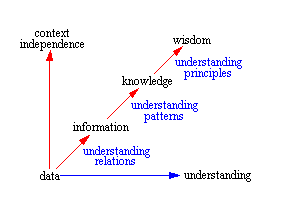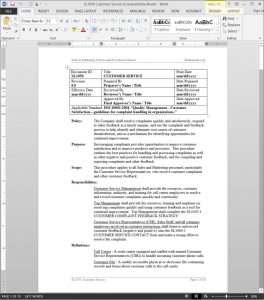Is Customer Feedback Important to Your Business?

Customer feedback is important to every organization and therefor, efforts should be taken to collect inputs to launch the corrective action process from external sources and from internal sources. In terms of external sources, how do you interface with your customers to collect the voice of the customer? Do you make it easy for them? Is Customer Feedback Important to Your Business?
Encourage Customer Feedback and Complaints
Surprisingly, sometimes it is not easy to figure out how to contact a business or organization in order to ask questions or to complain. They might make it clear how to place an order, but if you want to contact them for some other reason it can take some time and effort to figure out how — if you find out at all. Do employees know how to submit feedback they receive?
Companies who want to get better (improve their products, improve their processes, improve customer satisfaction) should understand the importance of customer feedback and look for ways to encourage and capture what customers and prospects say. All customer feedback is important, including complaints. So yes, we want to encourage people to complain, as well as encourage positive and neutral feedback.
The most effective way to encourage feedback is to make it easy for people to provide it. As an increasing amount of sales, marketing, and customer interaction takes place on the Internet, it is a logical place to focus your efforts.
Make It Easy to Give Customer Feedback
On the Bizmanualz website, we give visitors several methods to contact us, using both online and offline methods. Every post and product has a comments section where people can leave specific feedback to the blog post.
Online Feedback via Contact Us Page
To submit an online feedback form, they select a category (i.e., procedure manuals, training) for their comment, question, or complaint. Then they complete and submit the feedback form.
We don’t require much information, just a first name and an email address (so we can reply). Of course, we give people the option to give us complete information (name, address, phone number, etc.), but it is not required to submit the feedback form. Forcing people to provide a lot of information discourages feedback and we want to encourage customer feedback.
Offline Customer Feedback
We prominently give our business phone number and mailing address for anyone who wants to call or send something via mail. We also give a fax number and users can also complete the contact us online feedback form and submit it (it is at the top of every page).
Once we receive customer feedback, someone from our sales or customer service staff responds to it as soon as possible. They also review it to make sure the right category is selected and that other information is clear and correct.
Then, we have our own internal flags and notes we add to the customers comments as it is added to a database. This allows us to sort comments and feedback along several categories and subjects. Now the information can become more meaningful as we look for trends, topic patterns, themes, or a possible nonconformance that may lead to corrective action.
Consolidate Customer Feedback

Information is Power
Obviously, all complaints are an input to the corrective action process (even if it is eventually determined that corrective action isn’t required). Analyzing feedback for trends, patterns, and nonconformance can also provide input to corrective action, even if no one made a direct complaint.
Feedback is Information
The old cliché “information is power?” has a strong truth. Collecting and processing information about what prospects and customers think, want, and need gives us the power to make informed decisions, including problems that need to be fixed.
In our quality manual, for example, feedback should be reviewed to determine if a nonconformance (a requirement is not fulfilled) has occurred, or is occurring. Patterns can also show opportunities for possible preventive actions.
What makes this tool even more powerful is that we use it for all customer interactions. If someone chooses to call on the phone instead of completing an online form, then the customer service or sales person who assists them completes an electronic comment form that goes into the same database.
Customer Feedback From Sales Representatives
Likewise, if a sales representative meets with a customer, he or she completes an electronic comment form that goes into the database as well. So now, no matter where the customer feedback comes from, the information ends up in one place.
Consolidating customer feedback into one place helps make sure that it is all being considered when analyzing it. Important information isn’t stuck in a folder in someone’s desk drawer, and it doesn’t dissipate into the air when told to us on the phone.
Corrective Action Needs Internal Feedback
Getting feedback from outside the organization is important, but how are suggestions for corrections and improvements garnered from inside the organization? Does it take a big stack of non-conforming product or a major catastrophe to spur correction?
Just as organizations who want to improve should set up processes to capture external feedback, they should also set up processes to encourage and capture feedback from members inside the organization. This could include small improvements, problems with processes, and Corrective Actions Preventive Actions (CAPA).
Corrective Actions and Preventive Actions
At Bizmanualz we use a Kaizen process. Kaizens are used to make improvements, correct problems, and to perform CAPA. Any employee can complete and submit a Kaizen form if they recognize an improvement (no matter how small) or identify a problem that needs correcting.
We also have a Kaizen idea log, where recognized problems or potential improvements are listed, but the methods or solutions are not yet known. This creates awareness among team members of the issue, spurring discussion and brainstorming from areas outside of where the problem exists — potentially leading to innovative solutions.
Completed Kaizens are discussed at our regular morning meetings, and then posted on the wall of our kitchenette. This communicates the improvements and corrections so that everyone is aware of changes in methods or processes, plus it promotes an atmosphere or culture of improvement.
Achieving Continuous Improvement
Actively looking for problems might seem like a strange way to do business. But if you are really interested in satisfying customers, finding good suppliers, and creating effective internal processes, it is the first step in achieving continuous improvement. And that includes collecting information externally and internally. The sooner you can identify and correct problems, the better your organization will be and the happier your customers are.
Customer Feedback is Important to Your Business
Employing expensive methods like focus groups and extensive surveys have their place, but it seems odd to invest in those if you are ignoring what people are saying in your day-to-day interactions with your customers. How are you collecting information and data to spur your improvements and corrective actions?

















YOUR SAMPLES ENLIGHTS MY REQUIREMENTS TO APPROACH MY CUSTOMERS. VERY INFORMATIVE SAMPLES TO GIVE GUIDELINES ON FURTHER REASEARCHES